Necromancers make people uncomfortable. In the most permissive societies that tolerate such experimentation, their actions are taboo. In more conservative climes, anyone associated with necromantic magic could be considered evil without further question.
But the School of Necromancy isn’t all about turning corpses into undead minions in Dungeons and Dragons. Necromancers also focus on aiding the wounded, granting temporary reserves of life to allies, and draining the life of their foes. The most powerful practitioners can even reverse death entirely.
Before you sign up for your first day of Necromancy School, it pays to know what’s on the curriculum. Here are 20 statistics on DnD 5e’s School of Necromancy:
-
The shortest Necromancy spell by word count is Spare the Dying (23 words) and the longest spell is Magic Jar (405 words).
-
There are 38 Necromancy spells in DnD 5e, making it the third-least commmon magical school of the game’s eight schools.
-
Necromancy has the third-shortest average (144) and fourth-shortest median (109) word counts in the game.
-
Wizards have access to the most Necromancy spells in the game (28) — that’s about 74% of what the school has to offer. Rangers, with 0 Necromancy spells, don’t like messing with the magical forces of life and death at all.
-
Clerics favor Necromancy spells the most — 16.52% of their base spell list is composed of such magics. Warlocks are the next-most interested class in tampering with the necromantic arts.
-
Necromancers have a very good balance of spell effects, however they favor damaging spells (39%) and utility spells (37%) slightly more than the rest.
With 24% healing spells, the School of Necromancy is the most focused on the art of restoration of any 5e magic school — so put your pitchforks down until you know if it’s a zombie-summoning Necromancer or the village healer…Necromancer.
-
19 Necromancy spells require a material component; exactly half of the school’s spells. A verbal component is also required for 100% of Necromancy spells — not quiet work, raising the dead.
-
The School of Necromancy is the most expensive school in DnD 5e. 12 Necromancy spells have a material component with a cost requirement; of those, 6 spells consume the material component.
The cumulative cost requirement for Necromancy spell is 32,600 gp.
-
The most expensive Necromancy spell to consume the material component is True Resurrection.
Requiring a diamond worth at least 25,000 gp, this 9th-level spell is the most expensive in DnD 5e by a wide margin. It also brings anyone back from the dead who died within the last 200 years from anything but old age and can even create a new body for the target, so, yea, it should be kinda pricey.
Cumulatively, Necromancy spells require a minimum of 28,900 gp in consumed material components. This is assuming you are only targeting/creating one creature with spells like Astral Projection/Create Undead.
-
There are 10 concentration and 2 ritual spells in the School of Necromancy. That means only 26% of Necromancy spells require concentration, way lower than the gamewide average of 48%.
-
The Player’s Handbook started DnD 5e off with 27 Necromancy spells, the lowest of any school of magic. However, with the addition of 9 spells in Xanathar’s Guide to Everything and another 2 in Tasha’s Cauldron of Everything, Necromancy outpaced both Illusion and Divination to end up with 38 spells.
-
Necromancers aren’t long-distance spell casters. Spells with a range of Touch account for 29% of the school’s spells, and another 26% have a range of Self or 10 feet. Still, there are plenty of ranged options for damage-dealing abilities like Toll the Dead.
-
There are 7 area of effect spells in the School of Necromancy.
-
Necrotic damage (82%) is by far the most common for Necromancers. No surprises there.
-
Constitution saving throws are the most common ones forced by Necromancy spells. 26% of Necromancy spells force them, and 63% of saves in the school are Con saves.
-
Necromancer’s most-damaging spell is Finger Of Death. The 7th-level spell deals and an average of 61.5 necrotic damage on a failed Constitution saving throw.
-
About 3/4 of Necromancy spells have a casting time of 1 action — right in line with the game’s average. Soul Cage is the only reaction ability in the school, and Spirit Shroud is the school’s one bonus action.
-
About half of Necromancy spells are instantaneous. A whole host of other durations also exist, but 1 minute and 1 hour stand out as the next most common.
-
3rd-level spells are the most common for Necromancers, and 6th-level is the runner up.
-
9 Necromancy spells have been around since the first edition of Dungeons and Dragons:
Animate Dead Raise Dead Clone Ray Of Enfeeblement Feign Death Resurrection Finger Of Death Speak With Dead Magic Jar
| Spell Name | Level | Material Consumed? | Cost |
|---|---|---|---|
| False Life | 1st-level | No | 0 |
| Gentle Repose | 2nd-level | No | 0 |
| Feign Death | 3rd-level | No | 0 |
| Speak With Dead | 3rd-level | No | 0 |
| Animate Dead | 3rd-level | No | 0 |
| Negative Energy Flood | 5th-level | No | 0 |
| Abi-Dalzim’s Horrid Wilting | 8th-level | No | 0 |
| Shadow Of Moil | 4th-level | No | 150 |
| Soul Cage | 6th-level | No | 100 |
| Create Undead | 6th-level | No | 150 per target |
| Summon Undead | 3rd-level | No | 300 |
| Magic Jar | 6th-level | No | 500 |
| Circle Of Death | 6th-level | No | 500 |
| Revivify | 3rd-level | Yes | 300 |
| Raise Dead | 5th-level | Yes | 500 |
| Resurrection | 7th-level | Yes | 1,000 |
| Clone | 8th-level | Yes | 1,000 consumed
2,000 not |
| Astral Projection | 9th-level | Yes | 1,100 per target |
| True Resurrection | 9th-level | Yes | 25,000 |
| Spell Name | Level | Concentration? |
|---|---|---|
| Spare The Dying | 0 (cantrip) | No |
| Chill Touch | 0 (cantrip) | No |
| Toll The Dead | 0 (cantrip) | No |
| False Life | 1st-level | No |
| Inflict Wounds | 1st-level | No |
| Ray of Sickness | 1st-level | No |
| Gentle Repose | 2nd-level | No |
| Blindness/Deafness | 2nd-level | No |
| Feign Death | 3rd-level | No |
| Speak With Dead | 3rd-level | No |
| Animate Dead | 3rd-level | No |
| Revivify | 3rd-level | No |
| Life Transference | 3rd-level | No |
| Blight | 4th-level | No |
| Negative Energy Flood | 5th-level | No |
| Raise Dead | 5th-level | No |
| Contagion | 5th-level | No |
| Soul Cage | 6th-level | No |
| Magic Jar | 6th-level | No |
| Circle of Death | 6th-level | No |
| Create Undead | 6th-level | No |
| Harm | 6th-level | No |
| Resurrection | 7th-level | No |
| Finger of Death | 7th-level | No |
| Abi-Dalzim’s Horrid Wilting | 8th-level | No |
| Clone | 8th-level | No |
| True Resurrection | 9th-level | No |
| Astral Projection | 9th-level | No |
| Cause Fear | 1st-level | Yes |
| Ray of Enfeeblement | 2nd-level | Yes |
| Summon Undead | 3rd-level | Yes |
| Bestow Curse | 3rd-level | Yes |
| Spirit Shroud | 3rd-level | Yes |
| Vampiric Touch | 3rd-level | Yes |
| Shadow of Moil | 4th-level | Yes |
| Danse Macabre | 5th-level | Yes |
| Enervation | 5th-level | Yes |
| Eyebite | 6th-level | Yes |
Methodology
All data is taken from the three main fifth edition rulebooks (Player’s Handbook, Xanathar’s Guide to Everything, and Tasha’s Cauldron of Everything).
Word counts do not include the spell name, level, school, casting time, range, components, or duration. Nor do they include the stat blocks of any summoned or conjured creatures. They also do not include the words “At Higher Levels” for spells that can be upcast. Word counts do, however, include all text included in charts, including numbers.
One statistic from above is somewhat subjective: spell types (damage, heal, buff, debuff, utility). I tried to take a common-sense approach to what category each spell falls into and limited each spell to two types. Hopefully, these spell classifications at least prove useful for relative comparisons between spell schools if nothing else.
As a final disclaimer, I did all of this by hand, so there are almost certainly some small errors in my work — I’m only human.
How to Use Necromancy Spells in DnD 5e
How to use Chill Touch
How to use Toll the Dead
How to use False Life
How to use Inflict Wounds
How to use Ray of Sickness
How to use Blindness/Deafness
How to use Ray of Enfeeblement
How to use Bestow Curse
How to use Speak With Dead
How to use Spirit Shroud
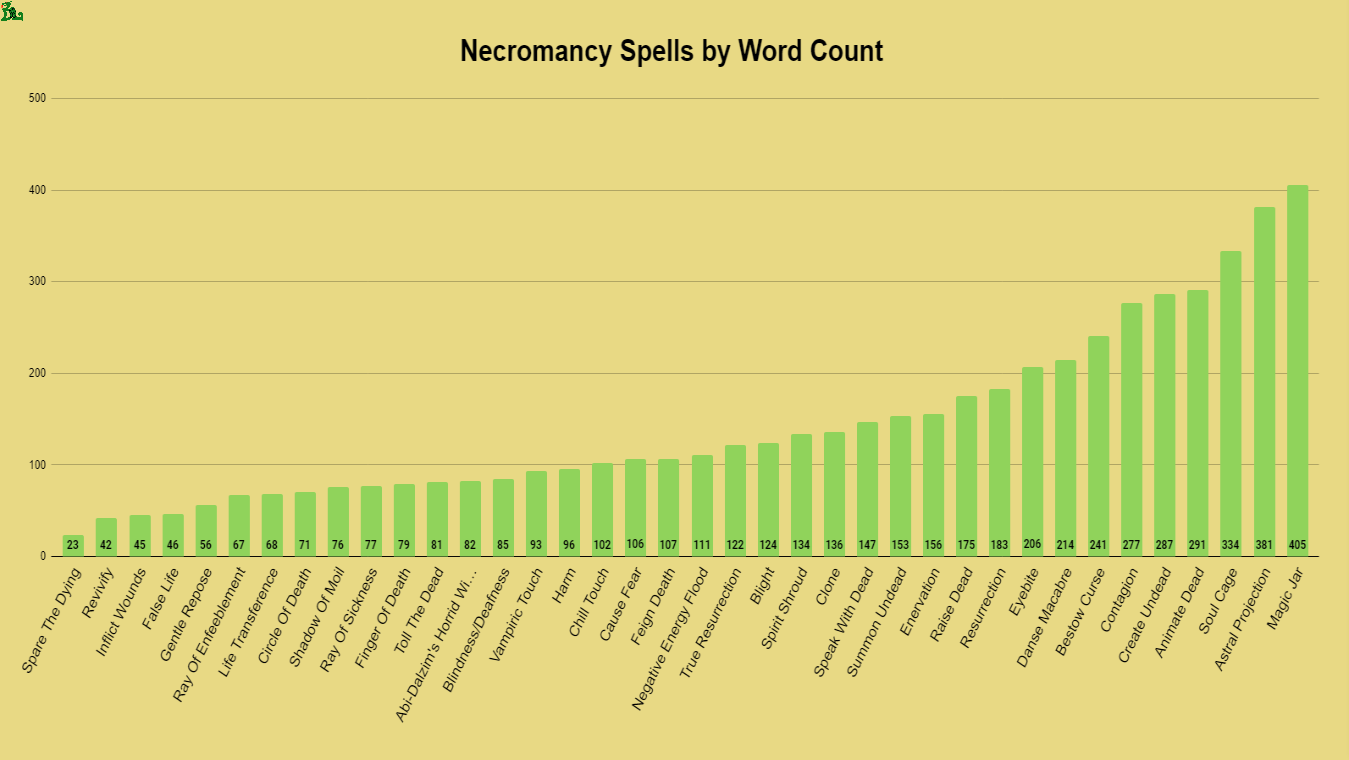
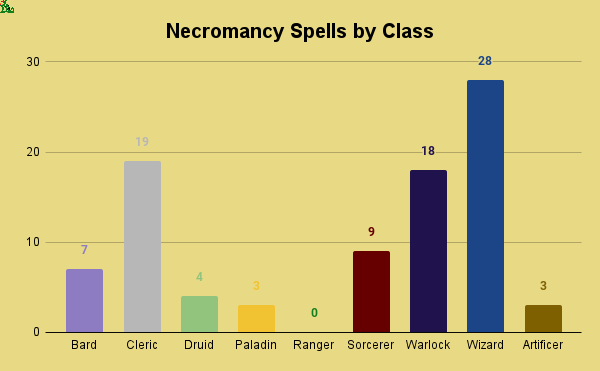
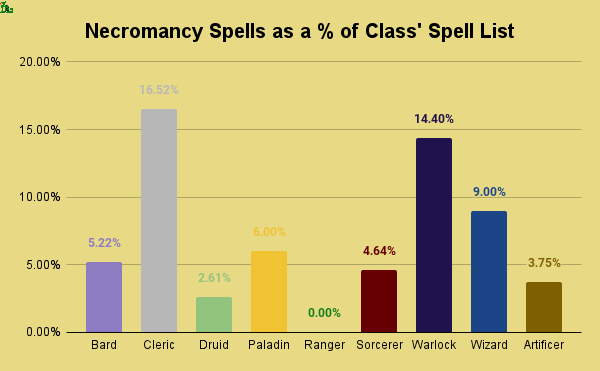
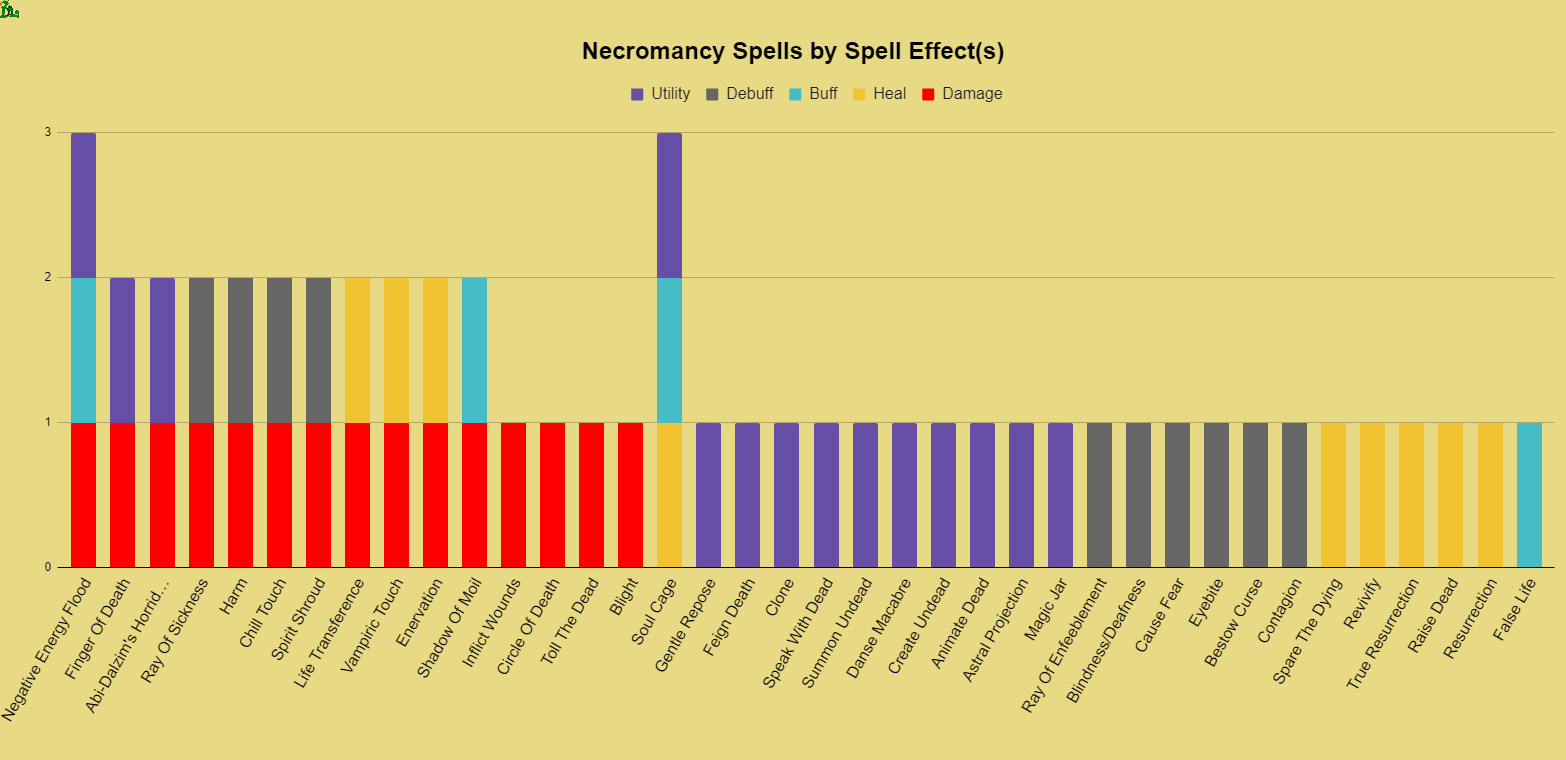
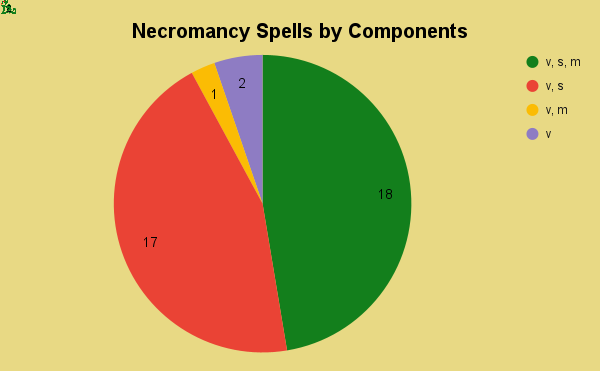
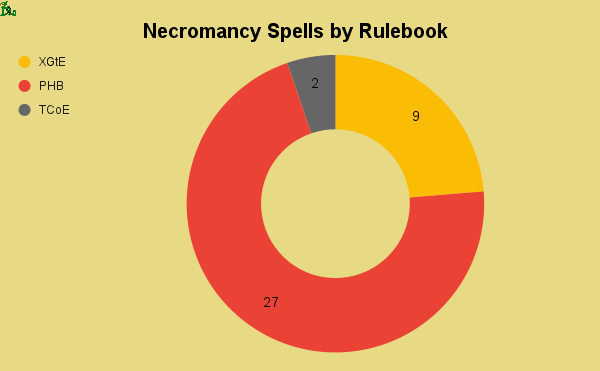
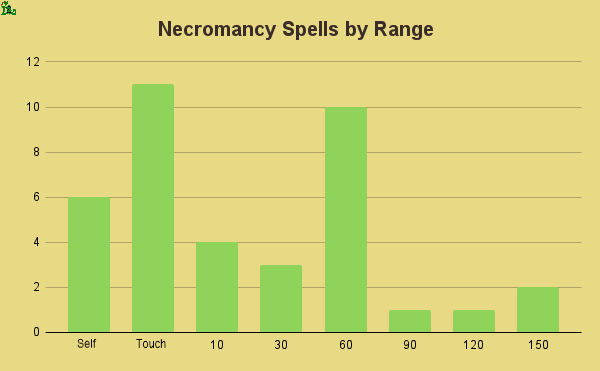
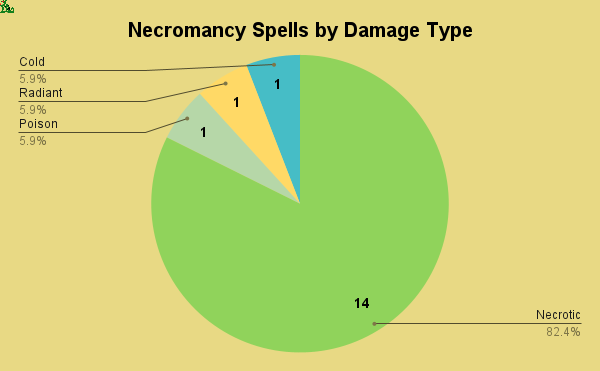
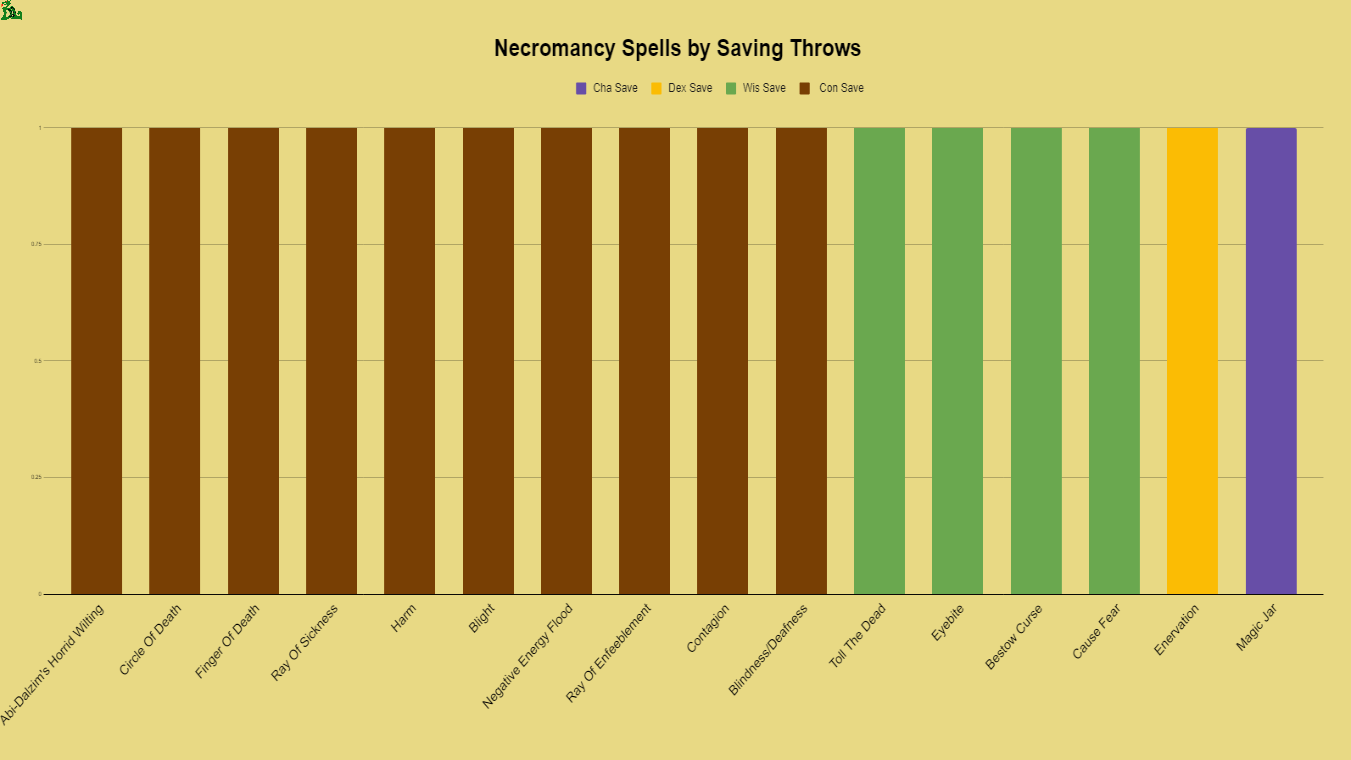
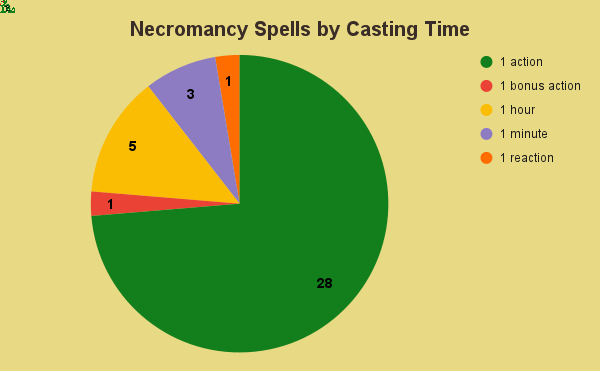
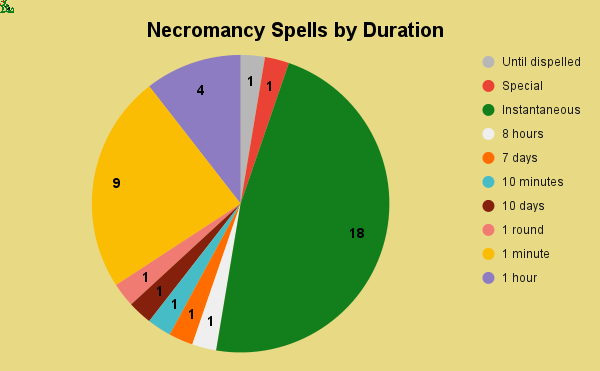
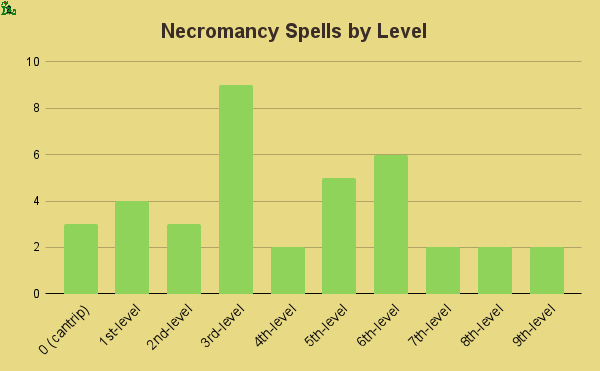
![Debuff Spells 5e [DnD Full List] dnd-ranger-casting-a-spell-on-spiders-5e](https://www.dndlounge.com/wp-content/uploads/2023/11/dnd-ranger-casting-a-spell-on-spiders-5e-300x169.webp)
![Healing Spells 5e [DnD Full List] dnd-elvish-druid-healing-human-fighter-5e](https://www.dndlounge.com/wp-content/uploads/2023/11/dnd-elvish-druid-healing-human-fighter-5e-300x169.webp)
![Buff Spells 5e [DnD Full List] dnd-tiefling-cleric-blesses-her-party-5e](https://www.dndlounge.com/wp-content/uploads/2023/11/dnd-tiefling-cleric-blesses-her-party-5e-300x169.webp)
![AoE Spells 5e [DnD Area of Effect + Multitarget Spells] dnd-dwarvish-wizard-casting-meteor-swarm-5e](https://www.dndlounge.com/wp-content/uploads/2023/11/dnd-dwarvish-wizard-casting-meteor-swarm-5e-300x169.webp)